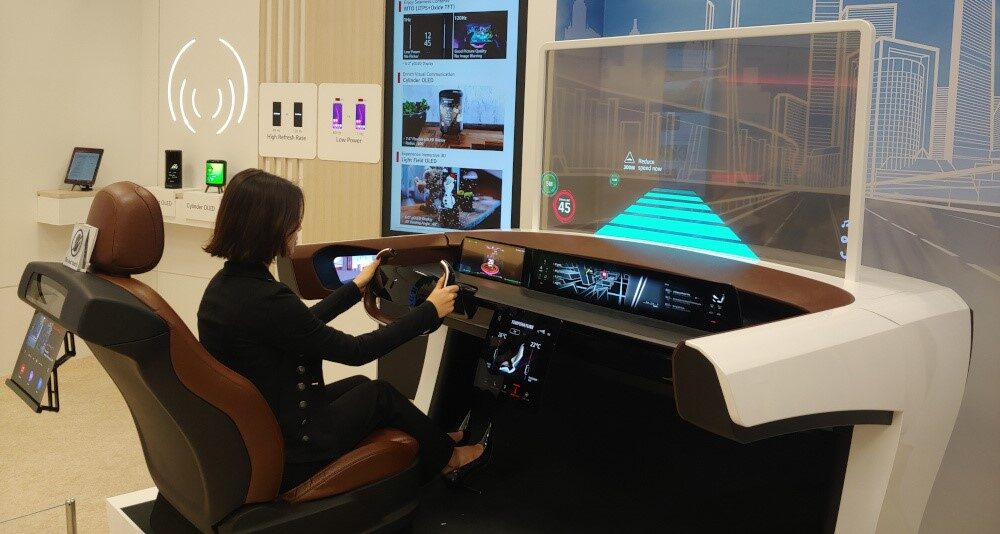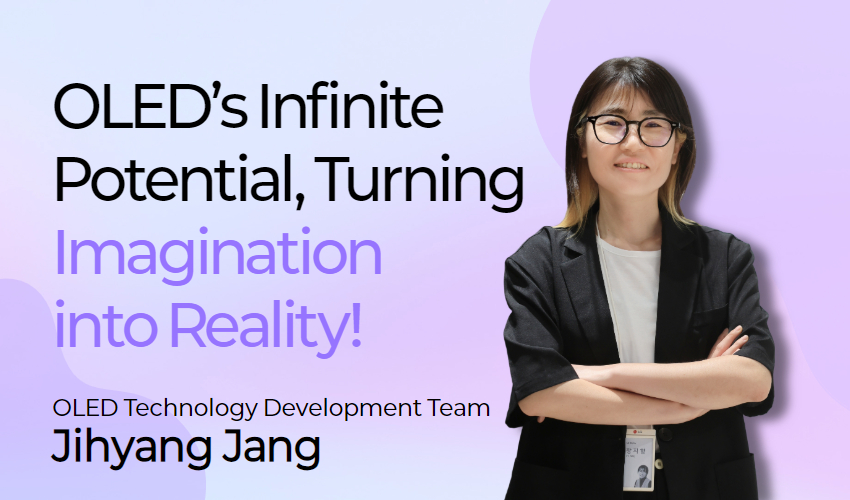By Alex Jensen – When Transparent OLED emerged back in 2014, LG Display viewed the technology as part of its strategy to lead the future display market. Since then, the company has achieved a rate of 40% transparency and established itself as the world’s only manufacturer of large-size Transparent OLED displays – commercializing its 55-inch full HD Transparent OLED in 2019.
And what we are now seeing is an ever-growing glimpse of the future as Transparent OLEDs are already showing how they could transform the spaces we live in. What might have been thought only possible in sci-fi movies has entered our lives in a very real way – not just with one or two applications but in various situations.
Planes, trains, and automobiles
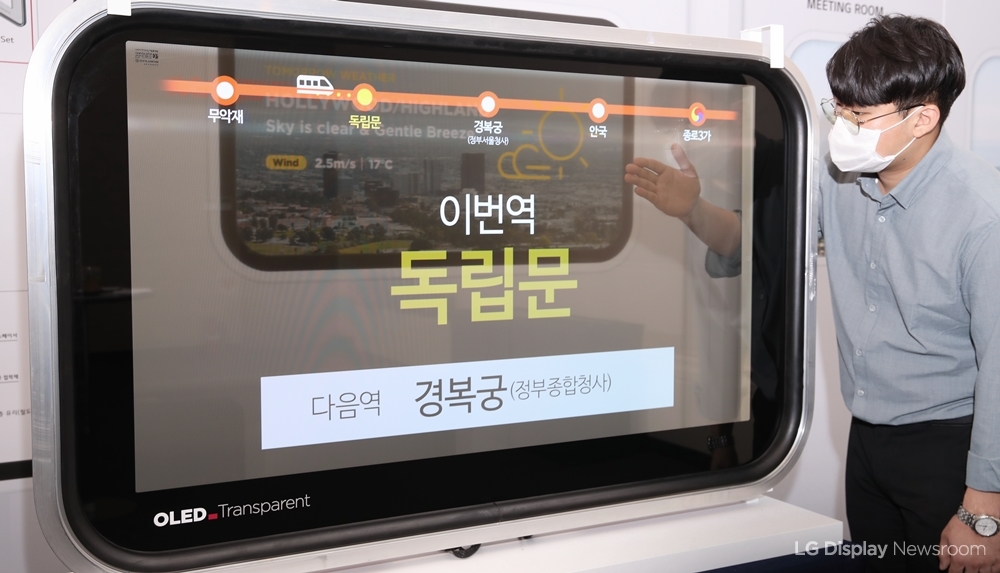
Trains and other forms of public transport are a perfect application for Transparent OLED panels because they are lined with windows that could function as displays showing information about routes, the weather, news, tourist attractions, adverts, and any other entertainment. Transparent OLED’s 40% transmittance seems like a slightly-tinted window, and allows passengers to view whatever is on the screen while also still being able to still enjoy outdoor scenery. Last summer, LG Display announced Transparent OLEDs were being used on subways for the first time ever, as they were successfully applied to underground trains in the Chinese cities of Beijing and Shenzhen. More recently, they broke new ground by emerging on overground trains in Japan – leading to the East Japan Railway Company being awarded by the Digital Signage Consortium for outstanding performance. Its use of Transparent OLEDs on a tourist train route between Akita and Aomori prefectures was evaluated as a “future-oriented example showing new possibilities for mobile signage.” And now, this Korean report also states that train and bus companies in Europe and North America are looking into using Transparent OLED panels. Where there’s a window, there’s a way!
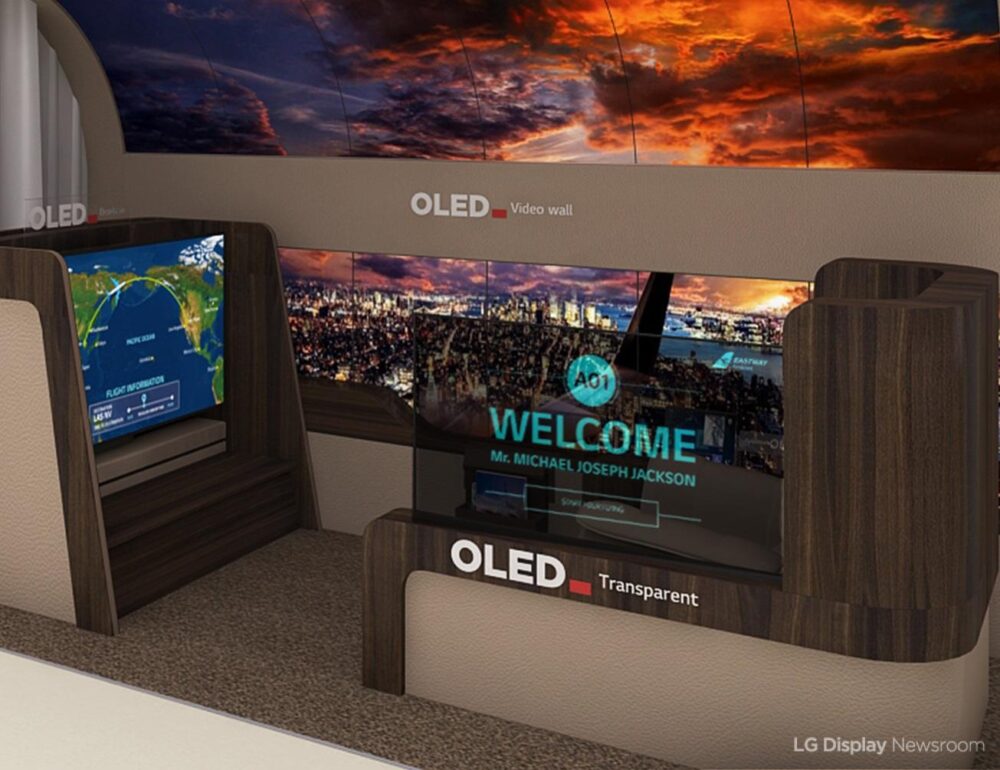
The exterior windows of airplanes might be significantly different to trains and buses, but Transparent OLEDs still have a role to play in the air. I think it’s been obvious for a long time that airlines have struggled to offer even premium passengers a feeling of freedom and openness. However, those cramped cabins can start to open up if some of the partitions become 55-inch Transparent OLEDs – offering not only a sense of space, but also more room for clean and clear information. Transparent OLED panels are also thin and light in their design because they are self-emissive, which means they do not need a backlight unit. This advantage is also the reason they can reach 40% transparency, compared to conventional LCDs that can only reach 10%. This airplane application was unveiled by LG Display at CES 2020, with the company explaining that passengers can turn off the transparency if and when they want privacy.
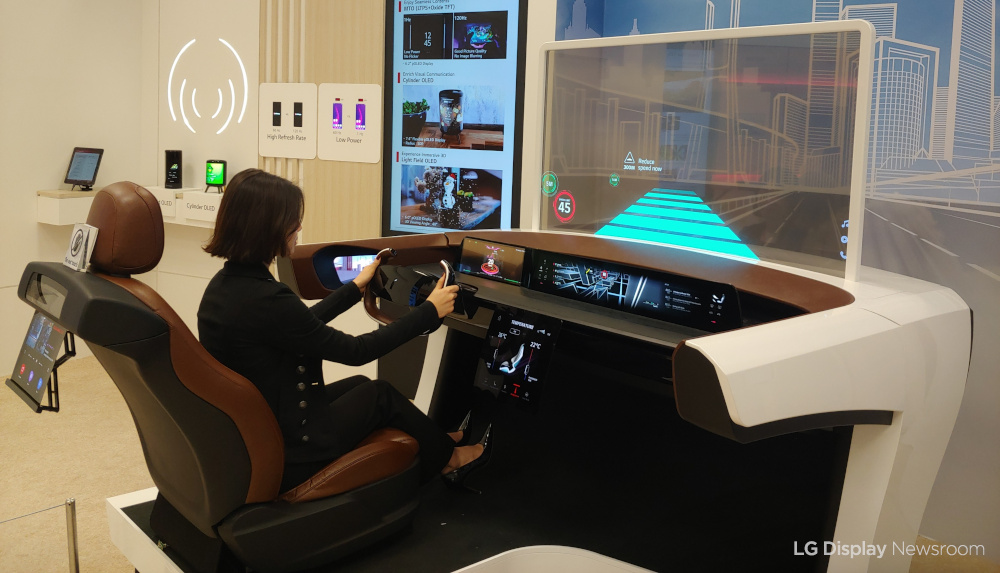
I recently wrote about the growing market for automotive displays. LG Display’s P-OLED technology has already made a leap towards offering superior image quality and clarity in premium vehicles, and we have seen how augmented reality can be used on windshield displays to offer more vivid and convenient information to drivers. As we move towards autonomous vehicles, the opportunities for automotive displays will only continue to accelerate because we will be able to get even more creative with what is shown – even if the car is driving itself, Transparent OLED would offer the comfort of still being able to see outside. As I pointed out in the article linked above, automotive OLED displays are especially favorable for electric vehicles too because they use less energy than LCDs. And this Korean report mentions cars as an example cited by industry experts of how transparent displays will become more diversified in the future.
The classic and the cool
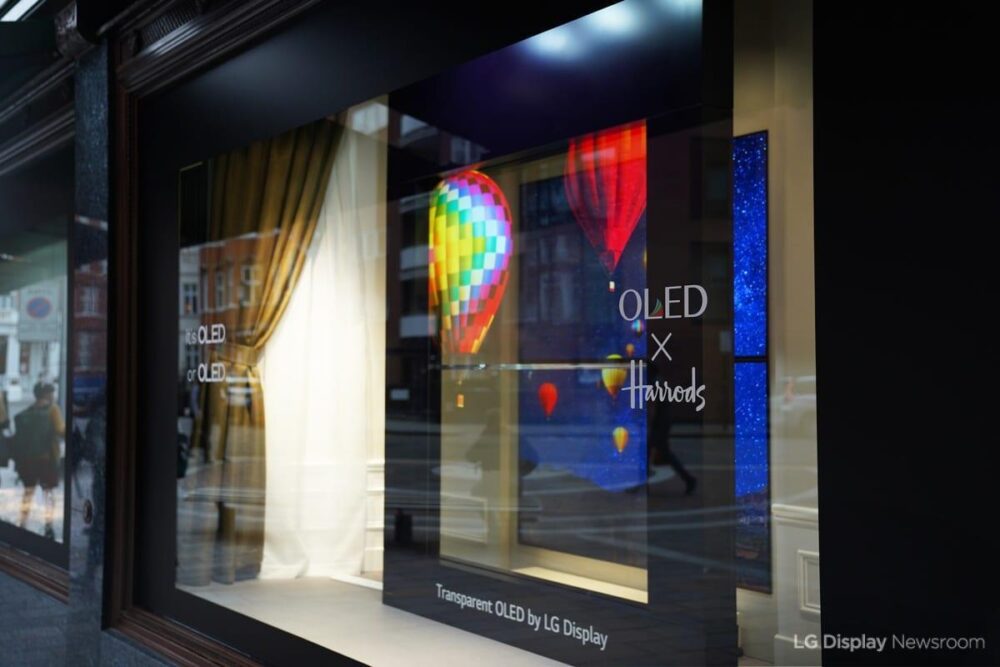
Transparent OLEDs are also now seen as a legitimate commercial proposition in the retail space. We saw this potential back in 2019, when LG Display partnered with Harrods to showcase large-size transparent displays in the London store’s legendary show windows. In the image above, they vertically combined two 55-inch Transparent OLEDs, maintaining a certain elegance while showing what cutting-edge technology can do. This really gave the European market a taste of how Transparent OLED can help stores grab attention by demonstrating a luxurious interior. There is something magical and artistic about store windows like this, and they can also be versatile – as demonstrated by the appearance of Transparent OLEDs instead of plain glass at the entrance of a Shinhan Bank branch in Seoul in 2021.
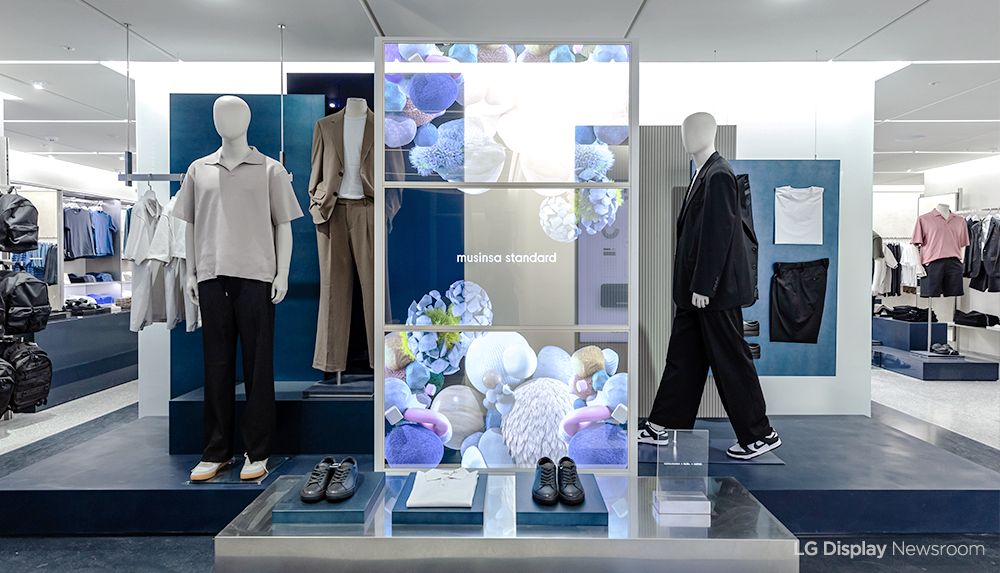
If Harrods has that classic appeal, Transparent OLED burst into the trendy world of the MZ Generation (a Korean term combining millennials and Generation Z) this year when Musinsa Standard in Seoul was filled with this futuristic technology. The first offline store of Korea’s biggest online fashion mall features various configurations of Transparent OLEDs, adding an extravagant atmosphere while also opening up the interior space because the displays do not feel like they are taking up any room. They are also proving themselves to be very practical. For instance, by placing Transparent OLEDs alongside mannequins, they have created a kind of fashion show that is much more innovative than just watching a regular screen. The images are also really vivid because remember this is full HD we’re talking about, despite being on a transparent display. And if it works in a hip neighborhood like Hongdae, it is easy to see how this technology might travel to similar stores worldwide.

A different side of Transparent OLED’s diverse applications is on show in another of Seoul’s trendy neighborhoods. Anthracite’s Hannam café is one of the highly regarded locations in the city’s coffee scene. Its industrial atmosphere has been offset by the bright colors and patterns portrayed by seven 55-inch Transparent OLED displays, which connect to form a digital wall stretching 9 meters in front of a rugged counter that greets visitors as they enter the café. This counter display was also a first when it was introduced last year, as Transparent OLED displays had never before been used to exhibit digital art.
A lifestyle for the future
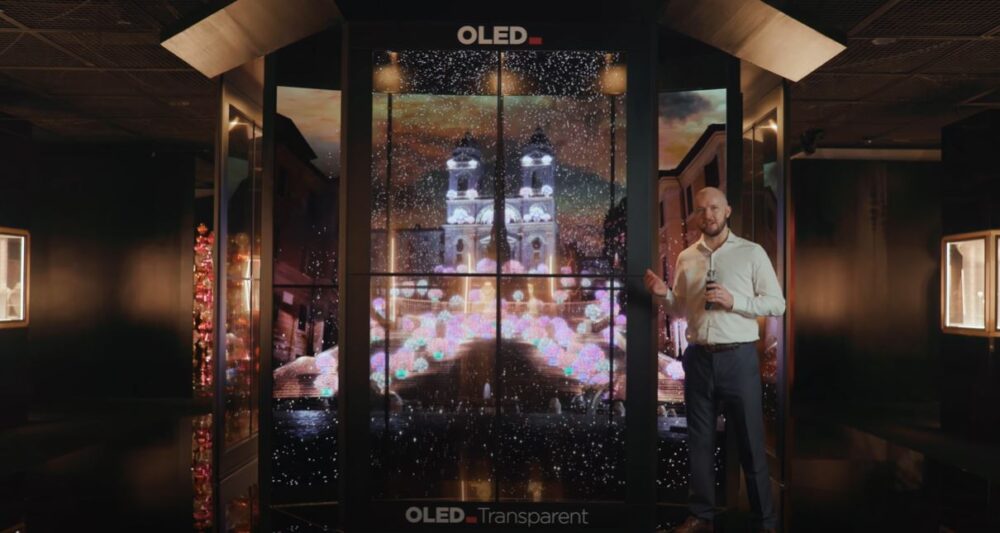
Visiting art galleries might never be the same again if Transparent OLEDs become more widespread as the canvas for creative minds. This summer, Italian luxury brand Bulgari joined LG Display to co-host Bulgari Colors: A Journey Between Jewels and Art. Being held at Seoul Arts Center until September 15, the exhibition is an explosion of color, as its title suggests, featuring jewels and digital art that really pop on OLED panels. As you can see in the image above, I had the chance to visit and check out the amazing Stairs of Bulgari exhibit. Using a combination of Transparent and Curved OLEDs, you step into a reinterpretation of Rome’s famous Spanish Steps, with the added magic of moving fireworks, petals, and gems.
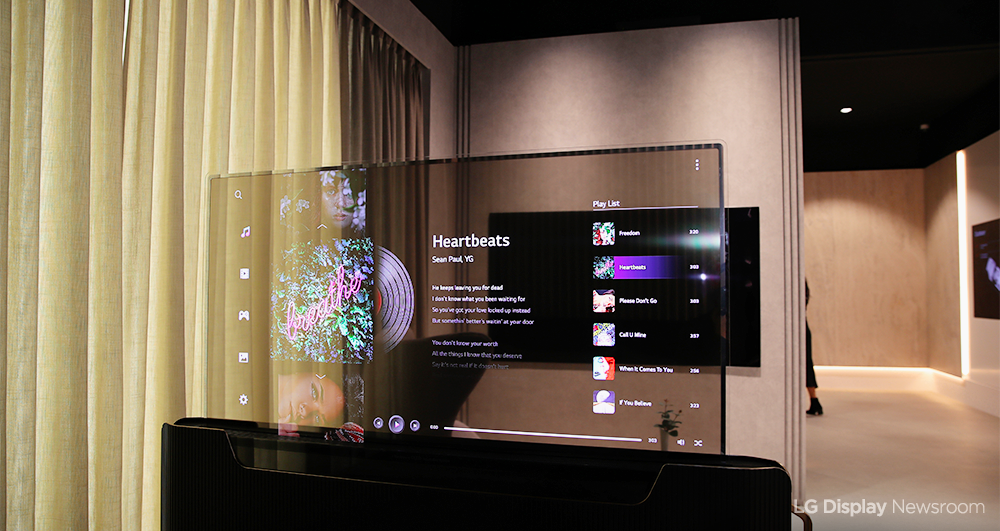
This list wouldn’t be complete without also mentioning two more major innovations that were unveiled at CES 2021. The first of these shown above was showcased in LG Display’s Smart Home Zone – a 55-inch Transparent OLED display that can rise from its frame at the foot of a bed (or wherever the user wants to put it). I have been able to use this display in person, and it is a great option for people who don’t want a screen taking up too much space. It can show information or TV contents in various screen ratios, so you can use it as a high-end alarm and music system with a transparent screen, catch some quick headlines, or watch a full movie and forget that it’s even a transparent display. This application is seen as a real breakthrough because it is the first time for Transparent OLED to be suggested for home use. Such displays could inspire a break from the traditional living room layout, offering much more design flexibility in modern smart homes – whether positioned as space dividers or against windows, where they would look like glass when not in use.
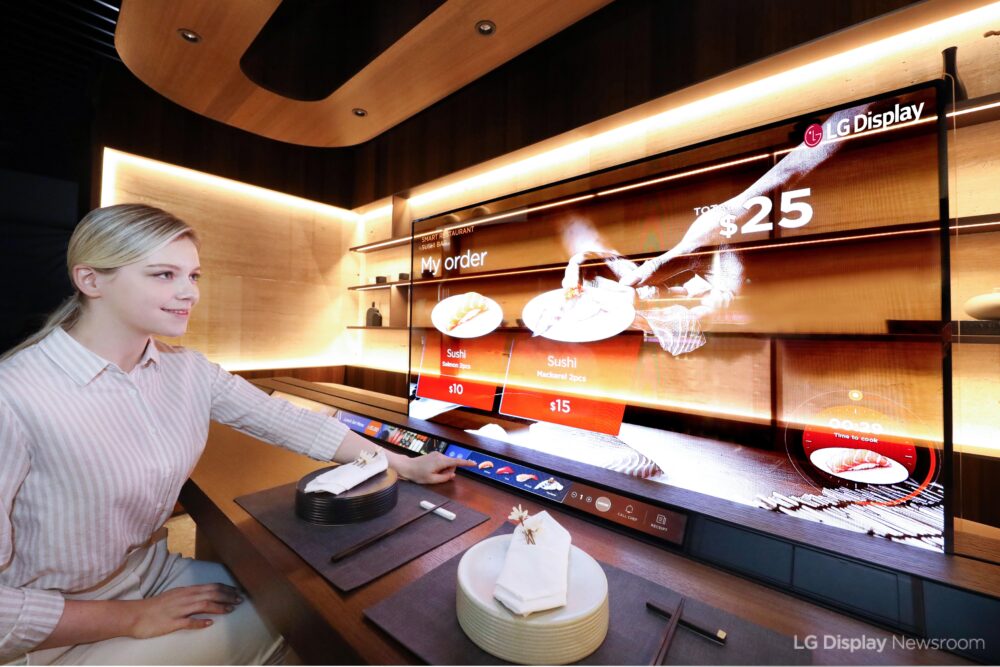
LG Display’s timing for this Transparent OLED application couldn’t have been much better! With the pandemic forcing restaurants worldwide to put up partitions, here is an option that offers some serious value to diners. At CES 2021, they set up a sushi bar to show how people would be able to use this 55-inch Transparent OLED display to find information with clear image quality, order food, and watch a movie or TV program while waiting. In settings like a sushi bar, you could also watch the chef preparing your food on the other side of the display – proving that contactless does not mean losing a connection. And this all begs the question: what is the next Transparent OLED application for the future? The short answer, I guess, is that it only depends on our imagination.




